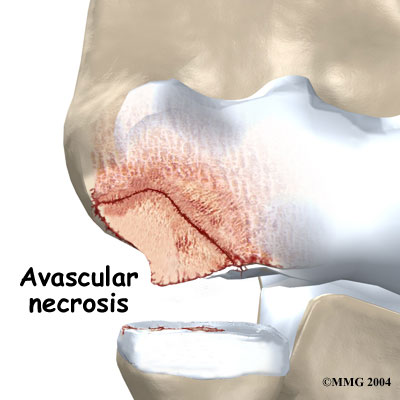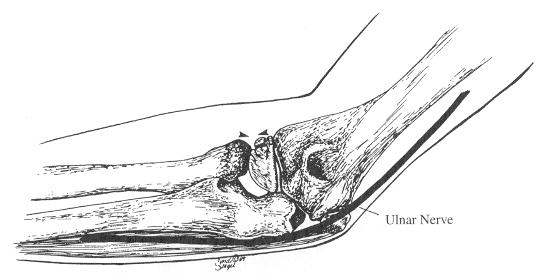Causes of OCD
There are several causes of OCD. There is no collective cause agreed upon within the medical community.4 However, a majority of literature and knowledge supports a process involving repetitive trauma and a fragile blood supply of the affected locations.1 Mechanical properties of the humerus and radius are important in this process.12
Repetitive trauma commonly involves overhead throwing sports or other high loading forces of the elbow. The acceleration phase and late cocking phase of throwing produces the direction of force associated with OCD. These forces cause compression and/or shearing of the bone surfaces (radial head and capitellum, see Figure 5) of the joint against each other.15
Young people (12-16 years old) have a very fragile blood supply to the areas of bone and cartilage affected by OCD of the elbow.1 This is associated with their growing bones. Repetitive trauma decreases the blood supply to these particular areas. This causes the ‘death’ of these regions (avascular necrosis) as demonstrated in Figure 4.14 The dead regions can break down into fragments of bone, which can move into the joint space and become 'loose bodies'.4
 Figure 4: Avascular necrosis of the humerus (dead regions of bone due to decreased blood supply) |  Figure 5: Compression of the radius and humerus in the elbow joint due to force. |
Who is at Risk? 1,4,5
-
Ages 12-16
-
Throwing Athletes (usually male)
-
Racquet Sports Players
-
Gymnasts (usually female)
-
Weightlifters